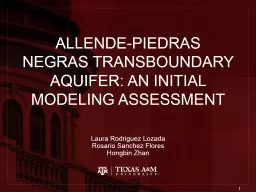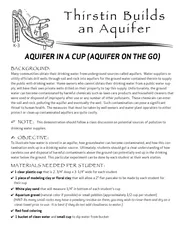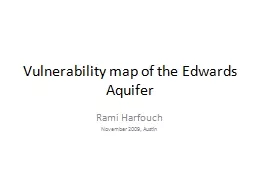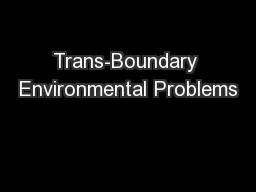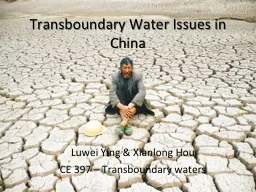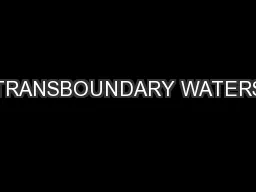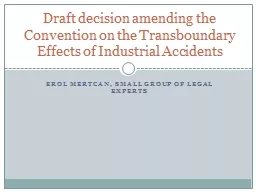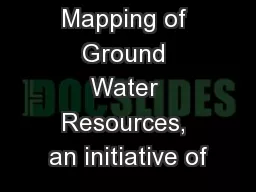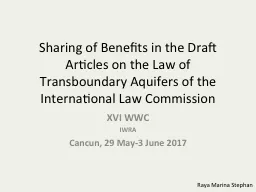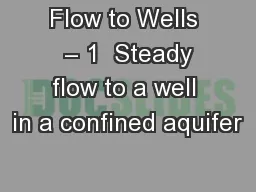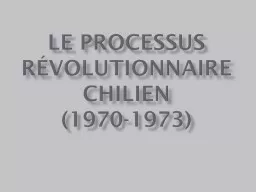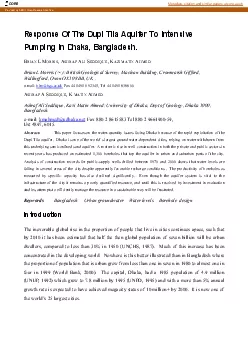PPT-ALLENDE-PIEDRAS NEGRAS TRANSBOUNDARY AQUIFER: AN INITIAL MODELING ASSESSMENT
Author : southan | Published Date : 2020-07-03
1 Laura Rodriguez Lozada Rosario Sanchez Flores Hongbin Zhan LOCATION AREA 2 P500 mm yr T20º C ET433 mm yr 5368 km² 5368 km² 36 potential transboundary aquifers
Presentation Embed Code
Download Presentation
Download Presentation The PPT/PDF document "ALLENDE-PIEDRAS NEGRAS TRANSBOUNDARY AQU..." is the property of its rightful owner. Permission is granted to download and print the materials on this website for personal, non-commercial use only, and to display it on your personal computer provided you do not modify the materials and that you retain all copyright notices contained in the materials. By downloading content from our website, you accept the terms of this agreement.
ALLENDE-PIEDRAS NEGRAS TRANSBOUNDARY AQUIFER: AN INITIAL MODELING ASSESSMENT: Transcript
Download Rules Of Document
"ALLENDE-PIEDRAS NEGRAS TRANSBOUNDARY AQUIFER: AN INITIAL MODELING ASSESSMENT"The content belongs to its owner. You may download and print it for personal use, without modification, and keep all copyright notices. By downloading, you agree to these terms.
Related Documents

